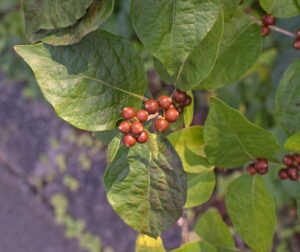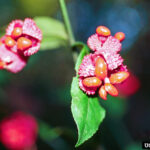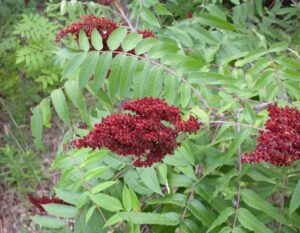Woodland Autumn Berries and Flowers
go.ncsu.edu/readext?824461
en Español / em Português
El inglés es el idioma de control de esta página. En la medida en que haya algún conflicto entre la traducción al inglés y la traducción, el inglés prevalece.
Al hacer clic en el enlace de traducción se activa un servicio de traducción gratuito para convertir la página al español. Al igual que con cualquier traducción por Internet, la conversión no es sensible al contexto y puede que no traduzca el texto en su significado original. NC State Extension no garantiza la exactitud del texto traducido. Por favor, tenga en cuenta que algunas aplicaciones y/o servicios pueden no funcionar como se espera cuando se traducen.
Português
Inglês é o idioma de controle desta página. Na medida que haja algum conflito entre o texto original em Inglês e a tradução, o Inglês prevalece.
Ao clicar no link de tradução, um serviço gratuito de tradução será ativado para converter a página para o Português. Como em qualquer tradução pela internet, a conversão não é sensivel ao contexto e pode não ocorrer a tradução para o significado orginal. O serviço de Extensão da Carolina do Norte (NC State Extension) não garante a exatidão do texto traduzido. Por favor, observe que algumas funções ou serviços podem não funcionar como esperado após a tradução.
English
English is the controlling language of this page. To the extent there is any conflict between the English text and the translation, English controls.
Clicking on the translation link activates a free translation service to convert the page to Spanish. As with any Internet translation, the conversion is not context-sensitive and may not translate the text to its original meaning. NC State Extension does not guarantee the accuracy of the translated text. Please note that some applications and/or services may not function as expected when translated.
Collapse ▲Each year I watch in wonder as creation begins its annual adjustment from the summer swelter to the crispness of autumn. The near deafening sounds of cicadas and katydids in the evening gradually decrease as temperatures cool. This is also when birds begin their annual fall migration to their wintering grounds. Just like you need to stop at a gas station to refuel on a long car trip, birds stop to eat fruits along their migration path. If you’re interested in making your yard or property a helpful refueling station for birds, there are several species to plant and certainly retain within your landscape. Cornus florida, Flowering dogwood is native to the eastern United States

Flowering dogwood fruit
where it’s commonly found along woodland edges and in yards. In late summer, its bright red fruits mature. They have a high-fat content and are a food resource for migrants such as wood thrushes, red-eyed vireos, and many other songbirds. Euonymus americanus, Strawberry bush is native to woodlands across much of the eastern United States. In late summer and into autumn, you’ll find its warty, red fruits all throughout the bush. When immature, the fruits resemble a strawberry, hence its common name. Once the fruit capsules split open, though, you’ll understand its other common name, Hearts-a-Bustin’.

Eunoymous fruit
Although the orangish-red seeds are poisonous to humans, wild turkeys and many songbirds eat them with no ill effect. Don’t get this one confused with its exotic cousin though, the invasive Euonymous alatus. If you’re purchasing for your home landscape, be sure it’s our native species. Rhus glabra, Smooth sumac is native to much of North America in roadsides, fields, and woodland edges. It often spreads by rhizomes (underground stems) into dense stands.

Smooth sumac seeds
The compound leaves have a long central stalk (rachis) that’s pinkish and has a waxy coating. Although they are often not a preferred food source, many songbirds eat the red fruits of female plants during migration, including pine warblers and eastern phoebes. Callicarpa americana, American beautyberry grows in sunny areas with moist soil that’s sandy or rocky. It has large leaves with a long leaf stalk. The magenta fruits grow in clusters that hug the stem. These attractive fruits add color to yards and woodlands in late summer and are an excellent food source for birds.

American Beautyberry fruit
Numerous songbirds, including purple finches and gray catbirds, feed on the fruits. In autumn, fields and roadsides across North Carolina are painted in a beautiful palette of Solidago spp or Goldenrod. People tend to blame these common wildflowers for their allergies or hay fever, but goldenrods are not the problem. Rather, they likely stem from another less showy plant that often grows in similar habitats Ambrosia artemisiifolia, Common ragweed. Pollinators do not visit this plant. Common ragweed is wind pollinated and releases a huge amount of pollen to ensure a successful seed set. This tiny pollen is what gets breathed in causing hay fever. Goldenrods, on the other hand, do not release pollen into the air for pollination. Rather, they produce nectar that attracts a tremendous variety of butterflies, moths, bees, and other pollinators. Given their abundance, goldenrod seeds provide a great food resource for birds and other wildlife during fall and winter.
For more information about horticulture and other topics please contact the N.C. Cooperative Extension, Franklin County Center at 919-496-3344 or Colby Griffin, Commercial and Consumer Horticulture Extension Agent, at colby_griffin@ncsu.edu.




